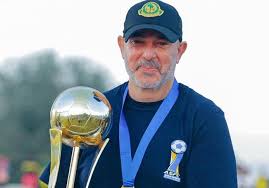
The dismissal of the head coach of Kaizer Chiefs FC during a training session sent shockwaves through the South African football community This incident…
Poor Team Performance
At the heart of the coach’s sacking was the disappointing run of results. Kaizer Chiefs, one of the most storied and successful clubs in South African football, had been struggling to find form. The team’s lackluster performance in both domestic league matches and cup competitions had raised concerns among fans and management. With only a handful of wins and several draws and losses, the pressure on the coach grew immensely.
As the season progressed, the team’s inability to compete effectively, especially against rival clubs, became a major talking point. Key players underperformed, and tactical decisions made by the coach often faced scrutiny. The team’s style of play, which had become predictable, further alienated fans who expected a more dynamic and winning approach.
Rising Expectations
Kaizer Chiefs boasts a passionate and loyal fan base, known for their high expectations. After a series of underwhelming seasons, the club’s supporters demanded immediate improvement. The historical significance of the team meant that anything less than success was viewed as unacceptable. The management understood this sentiment, leading to increased pressure on the coaching staff to deliver results quickly.
As the season wore on, frustrations among fans grew palpable. Social media was abuzz with calls for change, with many questioning the coach’s tactics and ability to motivate players. The management’s commitment to restoring the club’s former glory made it clear that a failure to improve results could lead to serious consequences.
Internal Conflicts
Behind the scenes, tensions were brewing within the team. Reports emerged of disagreements between the coach and certain players, particularly regarding training methods and player selection. A lack of harmony in the dressing room can be detrimental to any team, leading to a decline in morale and performance on the pitch.
Moreover, the coaching staff’s inability to communicate effectively with players added to the discord. Players expressed frustration over the coach’s approach, claiming that his strategies did not align with their strengths. This disconnect only fueled the fires of discontent, making the atmosphere increasingly toxic.
The Final Straw
The culmination of these factors reached a tipping point during a routine training session. Reports indicated that the coach had attempted to implement a new tactical approach, one that was met with skepticism from the players. During practice, frustrations boiled over, leading to a heated exchange between the coach and a senior player. This confrontation highlighted the growing divide between the coaching staff and the players.
Witnesses noted that the session was far from productive, with many players visibly disengaged. The lack of focus and effort during training was alarming, prompting management to intervene. It became evident that the team’s struggles were not merely a result of poor performance on match days but were rooted in deeper issues that needed addressing.
Management’s Decision
Faced with the reality of the situation, the club’s management made the difficult decision to part ways with the coach. The timing of the sacking was significant; it was clear that a change was needed to salvage the remainder of the season and to begin the process of rebuilding trust within the squad.
The decision was met with mixed reactions. Some fans expressed relief, believing a new approach could revitalize the team, while others lamented the loss of the coach, feeling he deserved more time to implement his vision. The club released a statement acknowledging the coach’s contributions but emphasized the need for change to realign with the club’s ambitions.
Looking Ahead
In the wake of the sacking, Kaizer Chiefs began the search for a new head coach who could restore the team’s competitive edge. The ideal candidate would need to have a deep understanding of South African football, a proven track record of success, and the ability to connect with players to foster a positive team culture.
As the club embarked on this new chapter, the focus turned to rebuilding. New strategies would need to be implemented to address the weaknesses exposed during the previous season. Engaging with fans and rebuilding their trust would be equally crucial for the club’s long-term success.onclusion
The sacking of the Kaizer Chiefs FC coach during training was a watershed moment for the club. It underscored the complexities of managing a high-profile team with a rich history and passionate supporters. Moving forward, the club must learn from this experience, addressing both the tactical and interpersonal issues that contributed to the coach’s downfall. The journey to restore Kaizer Chiefs to its former glory will be challenging, but with the right leadership and vision, it remains an attainable goal.
forward, the club must learn from this experience, addressing both the tactical and interpersonal issues that contributed to the coach’s downfall. The journey to restore Kaizer Chiefs to its former glory will be challenging, but with the right leadership and vision, it remains an attainable goal.





